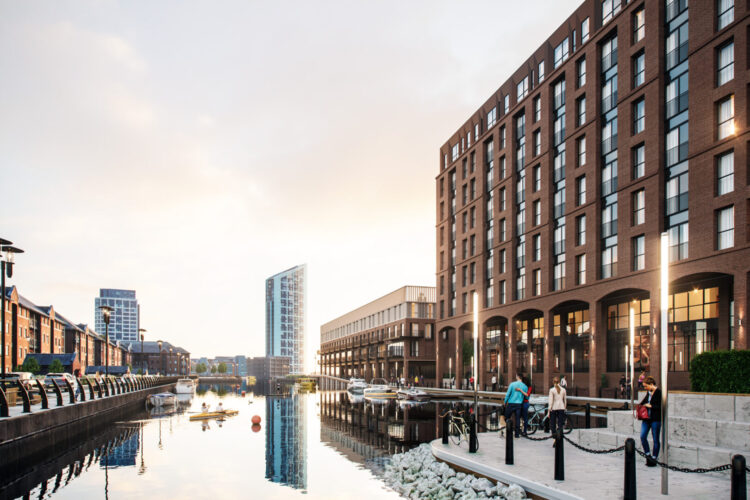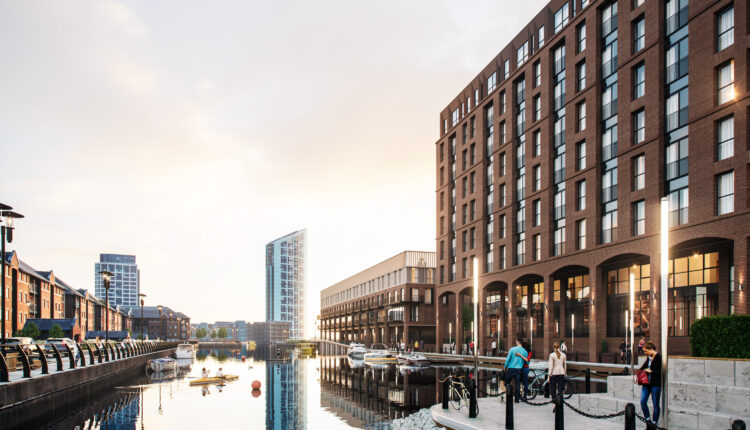In January Liverpool councillors approved the Local Plan, setting guidelines developers have to adhere to for the next decade, and Alan Bevan of City Residential says it could slow down new development. Tony McDonough reports

A legally-enforceable planning document which lays out guidelines that property developers in Liverpool have to work within to for the next decade could lead to a slowdown in new schemes.
That’s the view of local expert Alan Bevan, managing director of residential agency City Residential. He welcomes the attempt in the Local Plan to push up standards, acknowledging the quality of some residential schemes in recent years had been “mediocre”.
However, he added that the new standards would inevitably push up build costs for developers and warned that could hit the viability of some schemes and it may lead to a slowdown in the pipeline of new schemes until there was an equivalent rise in development values.
Mr Bevan is also concerned about the emphasis the council has placed on developments having to provide more two-bedroom homes and not too many one-bedroom dwellings.
He explained: “There is a huge demand for one-bed apartments as there is for two-bed apartments and the blend/mix of apartments in any residential scheme should be market-driven, based upon the location and demand.”
Councillors in Liverpool approved the Local Plan in January. It aims to be a catalyst for the construction of 35,000 new homes and the creation of 38,000 jobs. It went out to public consultation in summer 2021. An independent planning inspector has concluded that the plan is ‘sound’.
It contains 100 detailed policies to manage the sustainable development of the city, protect parks and open spaces, build on work to protect the city’s heritage and ensure high quality development and ‘place-making’. It also includes a new policy for guiding and managing development in the city centre.
Between now and 2033, the council is forecasting a 47,000 rise in the city’s population, taking it back above half a million for the first time since the early 1980s. In 1971 there were 610,000 people living in the city but economic decline saw this fall to 510,000 in 1981 and as low as 435,000 in 2001.
However, the city has undergone something of an economic renaissance that has accelerated since the mid-2000s. As of 2019 Liverpool’s population stood at just above 498,000, increasing the demand for good quality and affordable homes.
One development that has already fallen foul of the local plan is Romal Capital’s £100m residential scheme for Liverpool Waters. Planning officers rejected the proposal to build 330 new apartments in Central Docks.
Reasons given include a “negative impact” on the Grade II-listed Waterloo Warehouse and Stanley Dock Conservation Area and the number of one-bedroom apartments in the plan. Final say on whether the development can go ahead will now rest with a Government planning inspector.
In his latest quarterly update on Liverpool’s residential market, Mr Bevan said: “In theory the adoption of the local plan should bring clarity on what is and what isn’t acceptable to the city.
“Its adoption comes at a time when many developers have been concerned as to the ability of the planning department to progress schemes and concerns as to whether Liverpool was actually ‘open for business’ or not.
“The plan itself should drive an increase in the quality of what gets delivered and almost everyone in the city wants to see this happen. Many of the schemes that have been delivered over the last few years have been of mediocre standards at best and the market is demanding an improvement in quality.
READ MORE: Developer unveils £86m residential scheme
“Obviously with the required increase in quality, placemaking and standards there will be an equivalent increase in costs. This may make many sites unviable unless there is an equivalent rise in values/GDV based upon the improved standards.
“We do think that this is possible and if not land values may have to readjust to allow development to progress.”
On the emphasis on the provision of more one-bedroom apartments, Mr Bevan acknowledges that no one wants to see a rerun of the huge number of studios being built that were representative of the early Baltic Triangle developments.
However, calling for a more nuanced approach, he added: “We don’t think this stipulation is correct. For example, in Ropewalks we would anticipate a higher level of one-bed apartments while in docklands we would suggest the market would welcome a higher level of two-bed apartments.
“On an interesting note, out of over 600 managed/let properties we currently only have 13 available to let which shows the strong market we are experiencing. Out of these 13 available to let only one property is a one-bed apartment with the rest being two and three-bed apartments.”
When the local plan was being passed Liverpool City Council did acknowledge that the document was a guidance for planners rather than a set of rigid rules. It said planners were always willing to work with developers to meet local needs. The plan will also be reviewed in 12 months time.

